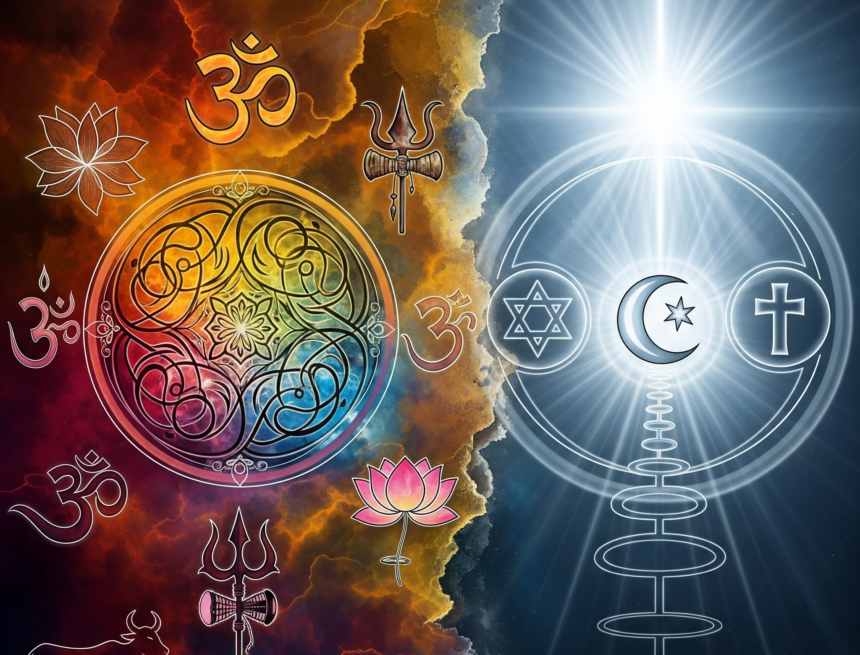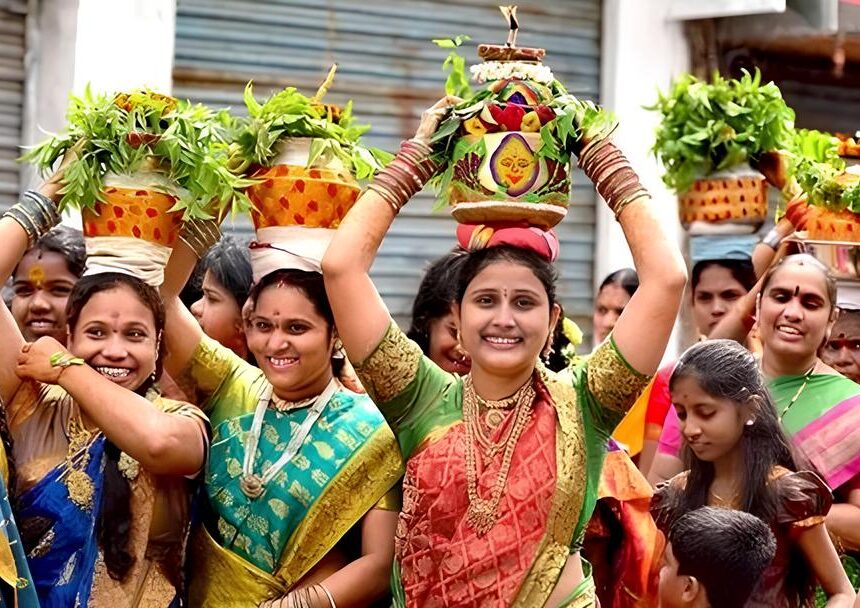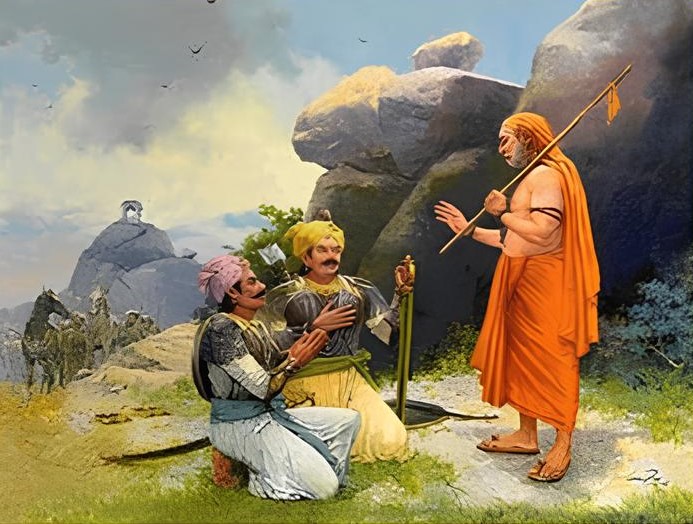When development is not rooted in culture, a nation is reduced to just a geographical landmass. Development and culture are not mutually exclusive in the Indian civilizational context. Sanatana Dharma doesn’t ask us to choose between development and devotion to faith — it asks us to integrate them. Its Purushartha framework enables human fulfillment in every aspect of life, with Dharma as the guiding principle. From the Ram Mandir to the Kumbh Mela, what critics dismiss as distractions are often engines of economy, culture, identity, and belonging.
Latest Posts

Secularism in India – Rooted in Sanatana Dharma
India's secularism is grounded in the civilizational ethos of Sanatana Dharma and emphasizes mutual respect over strict separation of state and religion. Sanatana Dharma doesn’t just preach tolerance and inclusivity; it embodies it. Unlike Western secularism, which arose from religious conflict, India’s approach fosters coexistence. India's secularism is not just political, it is civilizational.

Tirupati – A Sacred Legacy of Devotion and Divine Grace
Nestled in the sacred hills of Tirumala, Tirupati is more than a pilgrimage — it is a living legacy of devotion and divine grace. From ancient Pallava endowments to the grandeur of the golden roof of the sanctum sanctorum donated by Krishna Deva Raya, its history is etched in every gopuram. Always reverbating with the chants of “Govinda”, for millions in South India, it is not just a temple, but an inseparable part of life’s journey.

Bonalu – The Living Goddess Traditions of Telangana
Bonalu is more than a festival—it’s the heartbeat of Telangana’s devotion to the Mother Goddess. Rooted in ancient village traditions and the worship of Grama Devatas, it transforms Hyderabad into a living tapestry of devotion, ritual and culture. From trance-induced prophecies to the fierce dance of Pothurajus, every moment is an embodiment of Shakti — both protective and powerful.

Harihara, Bukka, and the Birth of Vijayanagara
At a time when Muslim invasions had devastated much of North India and were sweeping into the South, two brothers—Harihara and Bukka—guided by the sage Vidyaranya, laid the foundation of the Vijayanagara Empire in 1336. More than a kingdom, it became a bastion of Hindu dharma, shielding the South for over two centuries. This is the story of its origins and enduring legacy.
Daily Feed
Hampi – Poetry in stone
The ruins of Hampi are a testament to the grandeur of the glorious Vijayanagara Empire and its unsurpassed architectural brilliance.
The tricky issue of religious conversion and proselytization in India(Part I)
The universal declaration of a right to religious freedom is part of the problem in India rather than a solution.
From Bihar to Mewar: The Story of Purbiya Mercenaries in Western India
In this detailed exploration, Deeksha Tyagi sheds light on the Purbiya mercenaries. Sought after for their expertise in firearms, they played a significant role in shaping regional politics and warfare from Malwa to Gujarat and even in the British East India Company. The author highlights how their history exemplifies the adaptive strategies of communities in response to changing political landscapes in medieval India.de
The Ancient Barabar Caves near Gaya
The Mauryan era Barabar Caves of the Ajivika sect are perhaps the oldest man-made caves in India.
Hayagriva – The Horse faced God who carries our Civilization
Lord Hayagriva represents the restorer archetype who restores wisdom from the clutches of ignorance.
Modern myths around Ramayana
The trend of vilifying Lord Rama and glorifying Raavan comes from a total ignorance of what is actually written in the Ramayana.
The Plea For Carbon Dating Of The Wuzukhana Shivalinga Is A Himalayan Blunder
The plea for carbon dating of the Wuzukhana Shivalinga is inimical to Hindu interests. However, a GPR (Ground Penetrating Radar) survey of the entire "Visweshvara Hill" and also the whole Gyanvapi mosque complex will confirm the history of Avimuktesvara linga and the Gyanvapi site and provide irrefutable legal evidence in this matter.
Book Review: ‘Perversion of India’s Political Parlance’ by Sita Ram Goel
Sita Ram Goel was an astute observer of the harmful repercussions of linguistic relativity in action.
The tricky issue of religious conversion and proselytization in India(Part II)
The Balagangadhara school maintains that the problem of religion in India arises when we insist on converting our traditions more into religions.
Narrativizing Bharatavarsha
India's history and cultural ethos have been presented from a skewed lens that needs urgent correction.
The Ocean of Churn
India's turbulent past has been hidden while its prowess undermined by colonialists and neo-colonialists alike.
Daily Feed
Śaṅkara Charitam – a re-telling – Chapter 07
In the 7th Chapter of Śaṅkara Charitam, Shri Ramesh Venkatraman brings to us the next stage of Śaṅkara's life - the commencement of his education at Gurukula, his feats at his Gurukula and the conclusion of his education. During his stay at his Gurukula, and while learning and living the Āśrama Dharma of the Brahmacāri; Śaṅkara performs an unimaginable feat which leaves bystanders, and even his guru, in no doubt about his divinity.
Standing up for the Purusha Sukta
Hindus have long been made to feel ashamed of the Purusha Sukta's casteist elements even though they have no reason to in reality.
Sanatana Dharma – Through the eyes of travellers
Various distinguished scholars in their travels have written about the honesty, idealism, and magnanimity of the followers of Sanatana Dharma.
The real Shakti of Bharat lies in Chaturvarnya
"The system of division into different Varnas is the stepping stone to civilization, making one specialise and rise higher in the areas of one's heritage, learning and vocation. The youth of Bharat must try to understand the beauty of this eternal system where Chaturvarnya is the real Shakti of Bharat."
The essential unity of the Vedic religion and modern Hinduism
Modern Hinduism derives its vitality, structure and meaning from the Vedic 'religion' and the claim that the two are separate is misinformed.
Guha's Golwalkar (Part 1)
Noted columnist Ramchandra Guha completely misunderstands and therefore, misrepresents, the influence of Golwalkar's ideology on the RSS of today.
Vratabhanga, Paapa and Adharma: Sabarimala and a Case of Justice in India
The essence of Indic traditions is being tampered with to pacify a lot that doesn't believe in Ayyappa in the first place.
Great Women of household in the Vaishnava tradition
A summary of exemplary females from history in the Vaishnava tradition.
On Secularism, Modernization and Hinduism: Part 2
While a lot of energy is spent on understanding the threats posed by Islam, Christianity, or leftist liberals to the Hindu way of life, we don’t spend as much energy on understanding the threats posed by secularisation and the costs thereof to Hindu religion.
The Flawed and Dangerous New Educational Policy (NEP)
This article discusses the principal reasons that make the New Educational Policy (NEP) dangerous for Hindus and the traditional learning systems of Bharat. It does have some good points but the negatives far outweigh the positives to the extent that they may cause total destruction of Bharat’s ethos, culture, and values in a very short time.
Muhammad Ghori – No More Than Yet Another Barbaric Invader
Ila Krishna counters the arguments presented by Anirudh Kanisetti in his latest article and explores the truth about his claims of Ghori's leniency towards Hindus in general and Prithiviraja Chauhan's kin in particular, and his propagation of Sanskrit and coins with inscriptions of Goddess Lakshmi in Bharata.
Obsessive Compulsive Spirituality
Spiritual enthusiasts expect growth in the spiritual realm to happen much like the one in the material world by constantly looking for rewards and convincing others of their progress.

